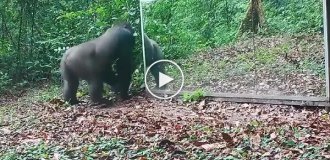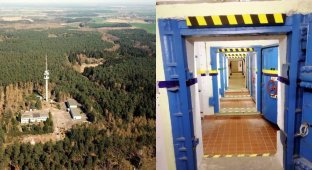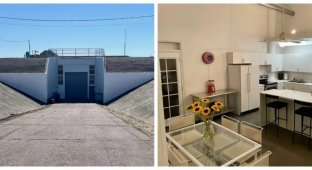An American explained why life in an underground bunker is cool (7 photos)
A California resident named Caitlin is not afraid of the apocalypse and is not an adherent of the “prepper” sect. But she chose an underground bunker as housing. Why? 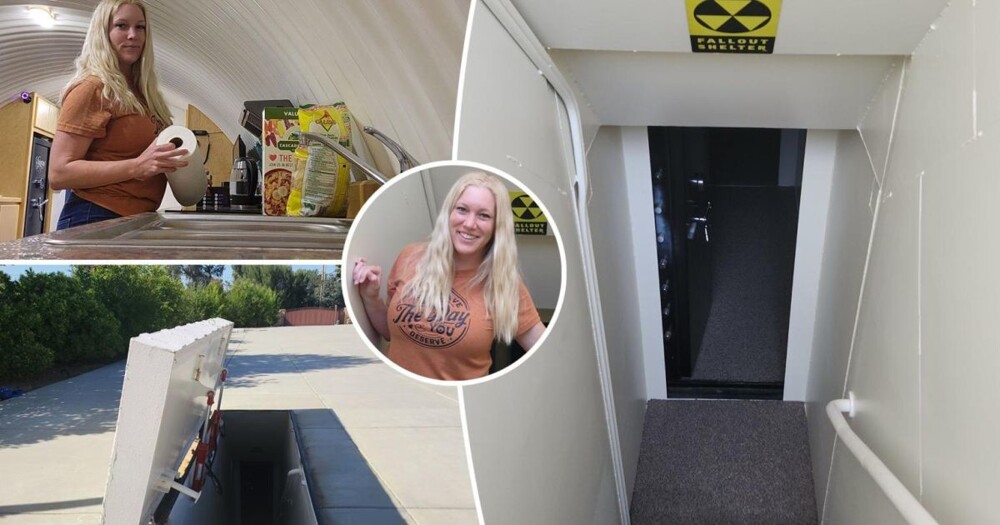
Living underground may seem like an apocalyptic, worst-case scenario, but that's exactly what Caitlin does. She has been living in an underground bomb shelter in California for just over two weeks. And no, it's not because she thinks Judgment Day is just around the corner. But just for reasons of economy!
A woman pays just $500 a month for an underground abode in her friend's backyard. She plans to live here for a year to save up money to buy a normal apartment above ground.
The bunker was built in 2012 and occupies just over 100 square meters. And although this is not the most typical situation in life, Caitlin is more excited about this opportunity than afraid of anything - at least for now.
“There are people who go on Naked and Afraid,” she says, referring to the reality show where people struggle to survive in the wild for weeks. I think living in a bunker is kind of like my Naked and Afraid."
She chronicles her “underground adventures” day after day on TikTok under the username undergroundgirl1. Subscribers are worried about her - they worry about the lack of daylight and fresh air, they urge her to take care of her health... Many admit that they themselves would never settle in such a place because of the “fear of being locked up.” 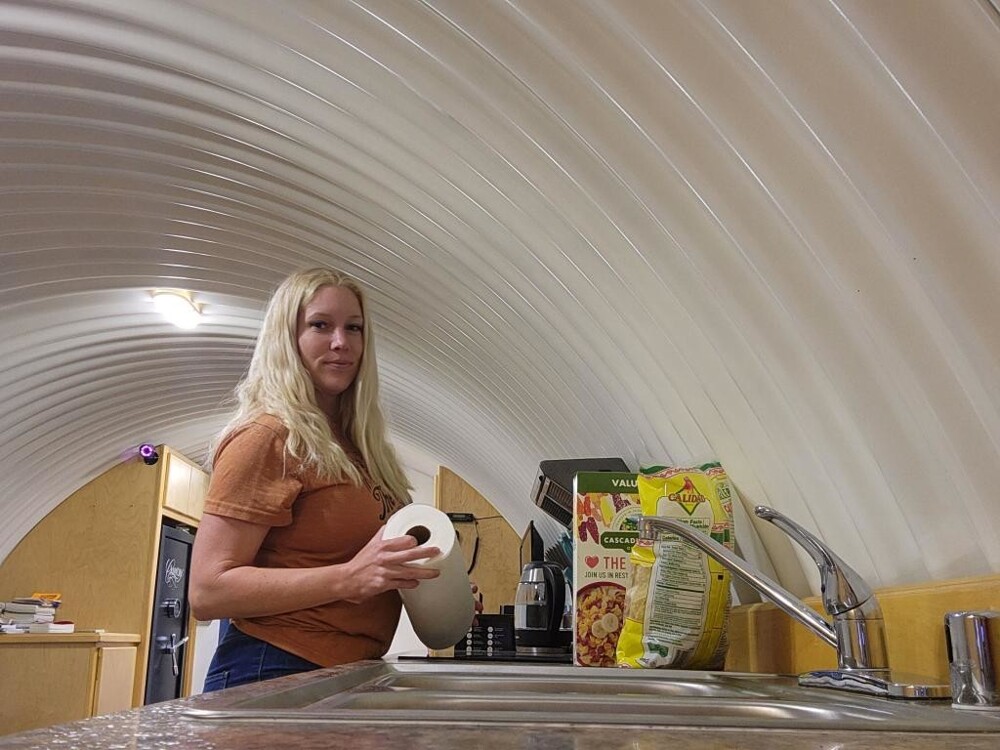
Why non-traditional homes are becoming more and more in demand
Bunkers are now experiencing a new boom. Companies that build these fortified structures, designed to provide protection during emergencies or catastrophes, say interest in them has increased by 30% to 50% this year alone.
While most bunkers remain uninhabited "backup airfields" and are not used in any way, some desperate minds like Caitlin see them as a safe haven to ride out today's stormy housing market.
“A friend of mine bought a house a couple of years ago and it came with a bunker,” she explains. "I just came up with the idea of, 'Hey, why don't you rent it to me? And when you want to sell the house, we'll know everything is in working order.'"
While many would shudder at the thought of living underground, people like Caitlin see it as a necessary step to saving up for their own home.
"Prospective home buyers are finding creative ways to save money on a home purchase," says Realtor.com® economist Hannah Jones. “In the short term, buyers may be willing to accept less than ideal living conditions if it gets them closer to their goal.”
In California in particular, the housing market has become so expensive that Devin Lucas, a real estate agent in Orange County, California, admits, “I know first-hand the challenges buyers face in this increasingly expensive market.”
Lucas notes that because many potential buyers found themselves outside of their desired areas, they had to adjust their expectations. “Some are looking for alternative options, such as moving further away or looking at smaller properties to make home ownership more affordable,” he adds.
He also notes the rise in accessory dwelling units (ADUs) and other rental options.
“Thanks to new and much more lenient building laws surrounding ADUs, there have been many more small rental units on the market lately, and some of them are converted garages,” he says. 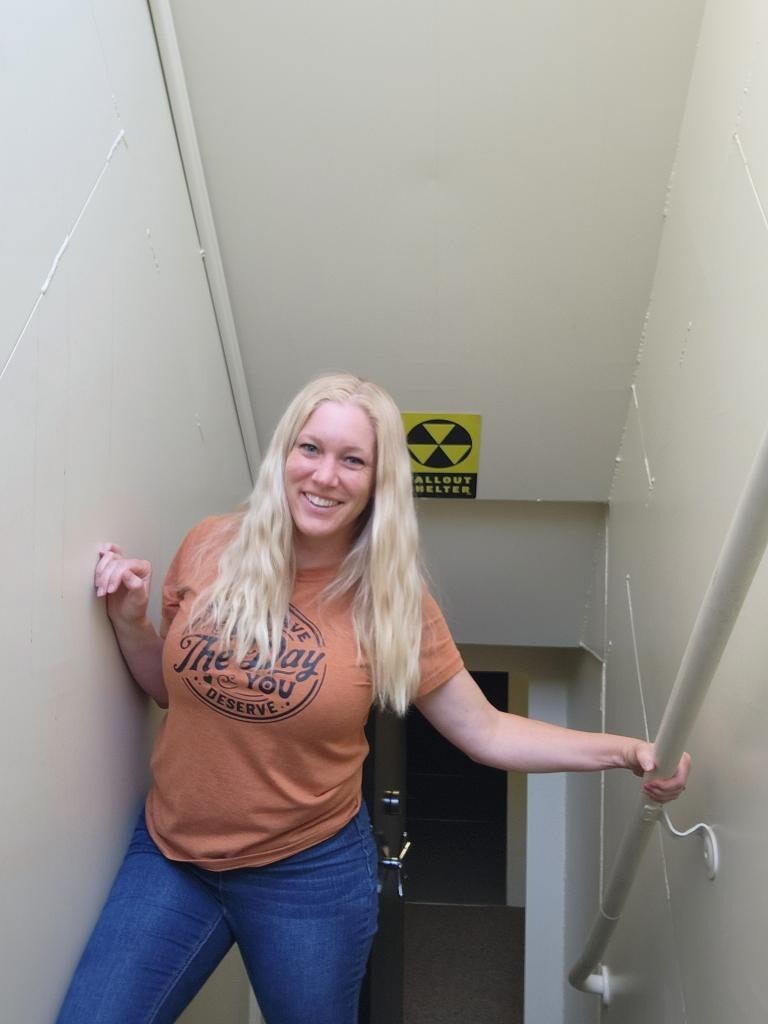
Caitlin notes that while she loves her new home so far, she has no intention of living in the bunker permanently.
“I decided that with the cost of housing now and the interest rates, I would just stay here for a year,” she says. “And, you know, we’ll see, maybe things will calm down a little.” 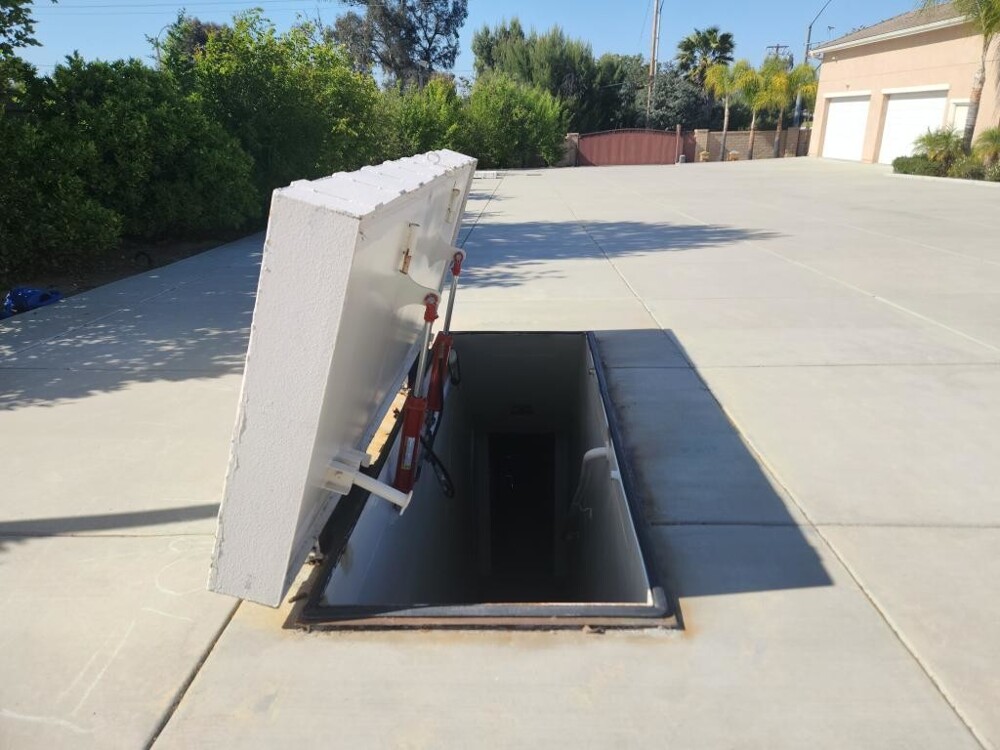
Unexpected benefits of living underground
Caitlin has only been living in the bunker for a few weeks, but she's already discovered several benefits to the lifestyle—beyond just being safe in case of disaster.
Of course, one of the biggest advantages is the affordable rent. (Although Caitlin admits that the bunker would likely cost more than $500 a month if she weren't renting from a friend.)
She also said that utilities in the bunker are virtually free: “The water comes from a well, and everything else is provided by solar energy.”
But Caitlin says there are other unexpected benefits, one of which is that she sleeps like the dead.
“One of the biggest benefits that I didn’t realize was that you can get a really good night’s sleep here,” she says. “I’m so used to living in cities that when I’m down here it becomes unexpectedly quiet. There is no noise in the head, the brain slows down a little.”
She also found working from home in a bunker to be extremely effective: “You can focus – I get so much done simply because there are no distractions.”
Caitlin also notes that the bunker is great for shelter during hot, humid times of year. It's hot outside, but downstairs it's cool and comfortable. 
Disadvantages of living in a bunker
However, Caitlin admits that living in a bunker requires some adjustment. Firstly, without windows it is easy to lose track of time. To combat this, she purchased a fluorescent lamp that simulates the sun rising and setting every day.
“I can set it up so it feels like the sun is waking me up,” she says. — The first three nights I slept 12 hours. It's so quiet here and you just pass out. But I can’t afford it, I have a job and a schedule.”
She also plans to slightly update the interior (with the landlord’s permission, of course) to make the space more cozy. Now the walls in the bunker are painted hospital white, there are bunk beds that can accommodate 22 people, and the rest of the furniture, purchased during the construction of the bunker more than ten years ago, seems outdated.
Life safety in a bunker
While Caitlyn seems to be okay with everything so far, many of her TikTok followers have expressed concerns about the potential risks of living underground.
"People ask, 'What if someone parks on top of that door?' - she says. - There's nothing to worry about. The hydraulics of the door are so strong that they will turn the car over. Moreover, the entrance hatch is not in a public parking lot, but in the backyard of my friend’s house.”
She explains that the hatch is too heavy to open, but if the hydraulics suddenly fail, there is a hand pump to open the door. Plus, for added peace of mind, there is a second hatch she can access from the other side of the bunker. 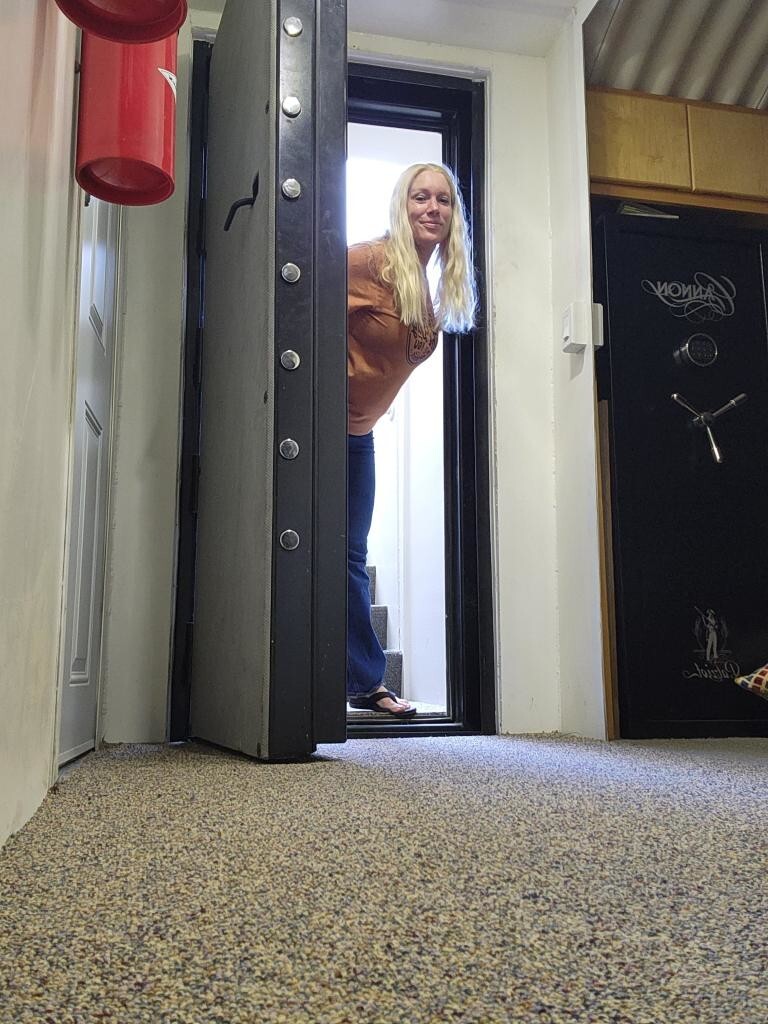
What if she gets injured or feels sick and is unable to call for help? Caitlin believes the same thing could happen in a house on the surface, the risk is the same.
“You know, it would be the same if I was an elderly person in an apartment,” she says. “If I had a heart attack, I would have to call someone or carry an emergency button with me.”
She says she and her friend, who lives in the main house, "check on each other a lot."
It's all about the fear of being trapped inside. But there were other questions. For example: “What if someone follows you to the entrance and you can’t get inside quickly? After all, a hydraulic door opens in 10-15 seconds, which is quite a long time.”
Other commentators suggested that food delivery could pose some challenges. As well as “bringing the guys from the bar home to her underground lair, where no one will ever hear them scream.”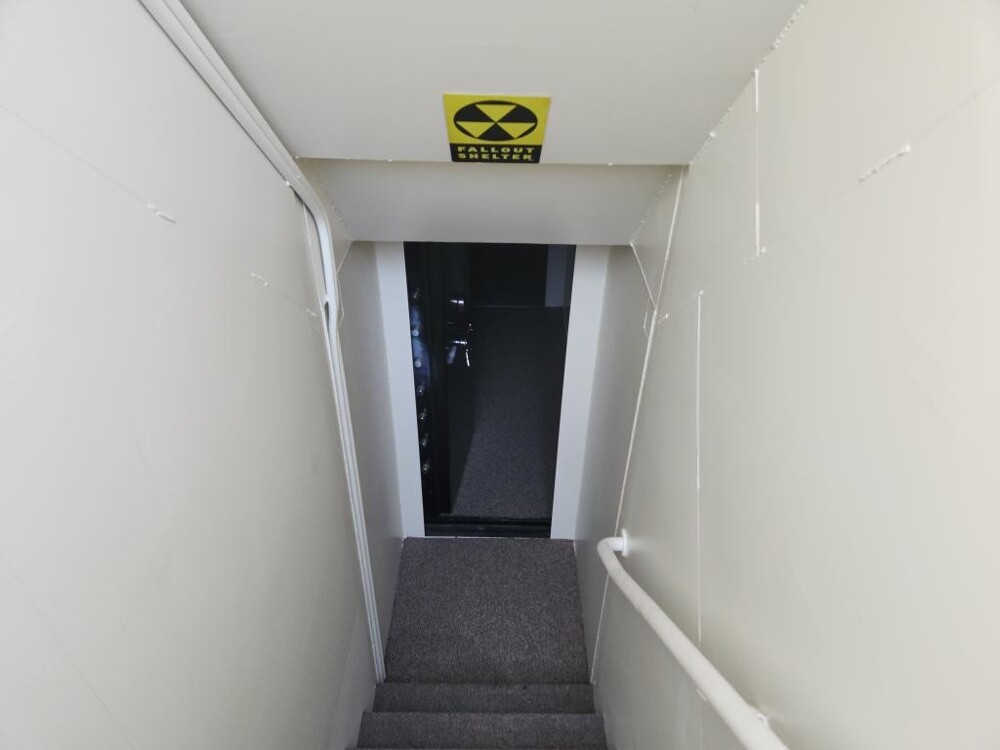
Can a bunker help homebuyers survive the housing crisis?
And will Caitlin's plan to wait out the market in hopes that home prices will fall? Devin Lucas doubts it.
“In today's competitive market, sitting on the sidelines and hoping prices will go down is often not practical,” he says. “We are seeing prices and interest rates continually rise, further pushing potential buyers further away from their goal of becoming homeowners.”
But Hannah Jones sees both sides of the equation.
“Riding out the housing market can be difficult because no one can predict the future,” she admits. “However, saving until you can afford to buy a home that suits your needs is a good idea. The best time to buy a home is when you find the right home in your desired area and price range. If today's market doesn't offer options that fit your budget and your needs, then your best (and perhaps only) option is to hold off and keep saving.”
And even if the market doesn't calm down by the time Caitlin is ready to move, she still likes the idea of living in this unusual home for a while.
“I thought it would be a really fun adventure for the year,” she says. “Just to know that I can do it.”








